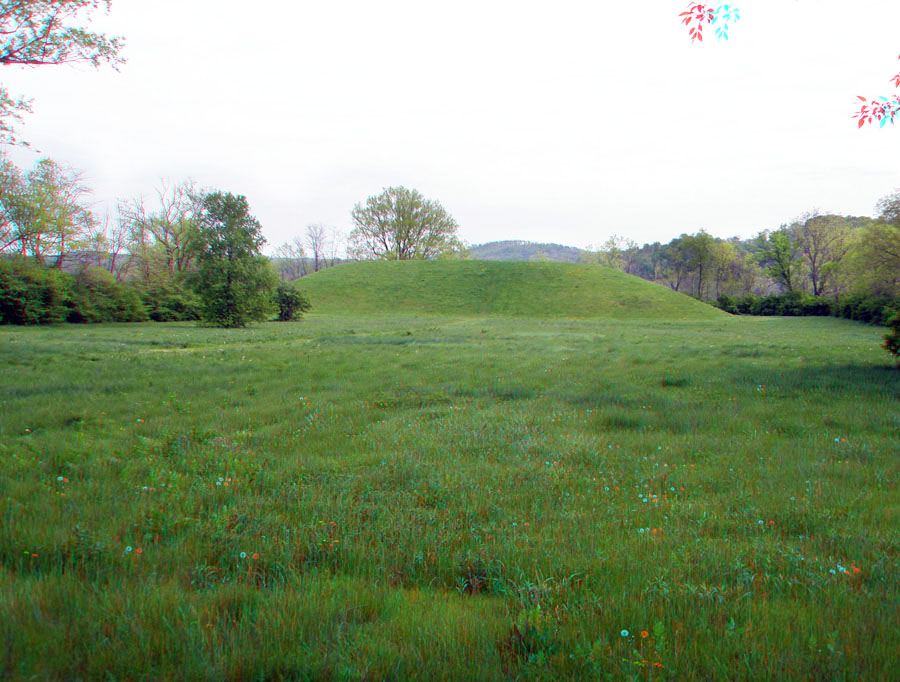
This view show the large burial mound located in the center of the field of earthworks in the park. A National Park Service sign in the park reads:
“Anatomy of a Mound”
“Seip-Pricer Mound—the second largest know Hopewell mound— evolved through a sequence events starting with the building of an oblong, multi-room mortuary building nearly 2,000 years ago. Ceremonial leaders cremated bodies elsewhere and interred them here in the mortuary building. They built earthen platforms where ashes were laid, and to a lesser extent, they placed extended corpses in log crypts. Some 122 men, women, and children were buried here, with unusual objects surrounding the remains.”
The mortuary building was then burned down and the layering of the mound began….” “a log crypt where the burials were mounded twice. The primary mound was built over the crypt, but over time crypt’s logs rotted away, causing the middle to sag. The secondary mound layer represents the Hopewell’s restoration of the mound.”
Other text on the sign states:
“Archaeologist Henry Shetrone excavated Seip-Pricer Mound between 1926 and 1928. He found several large effigy pipes including one of a doge eating a human head.”
“There were thousands of pearls… Implements and ornaments of copper, mica, tortoise-shell, and silver were found in profusion." — Henry C. Shetrone, 1928.” [See references]